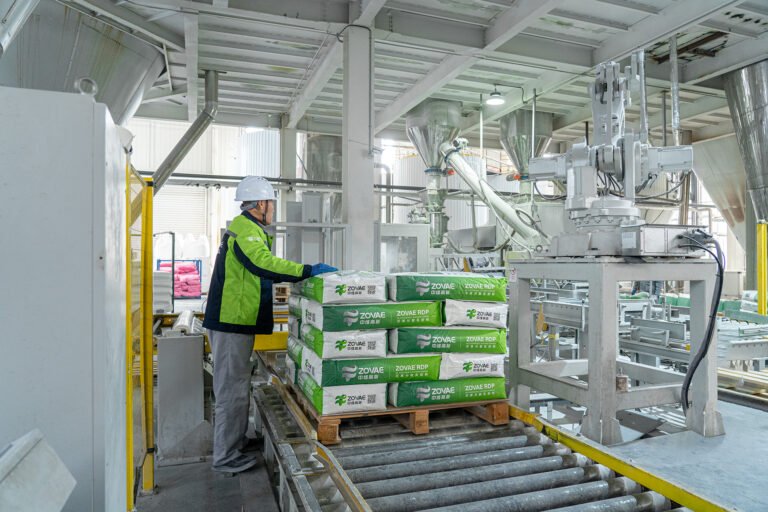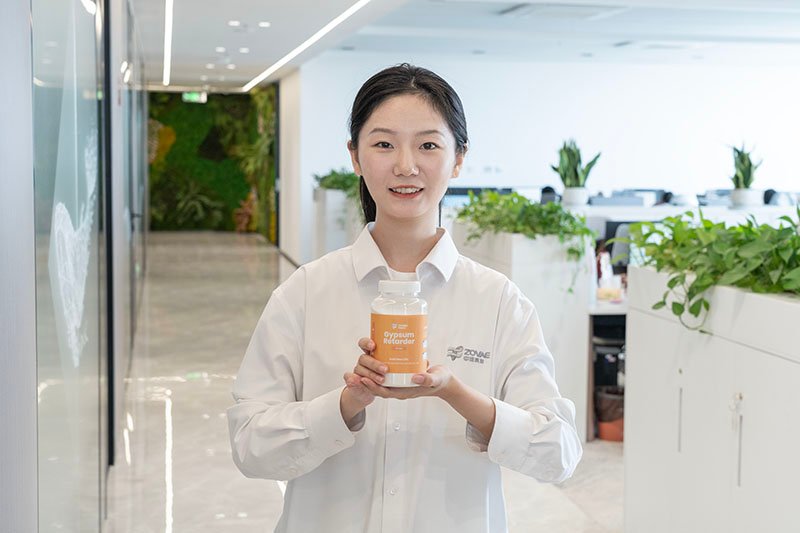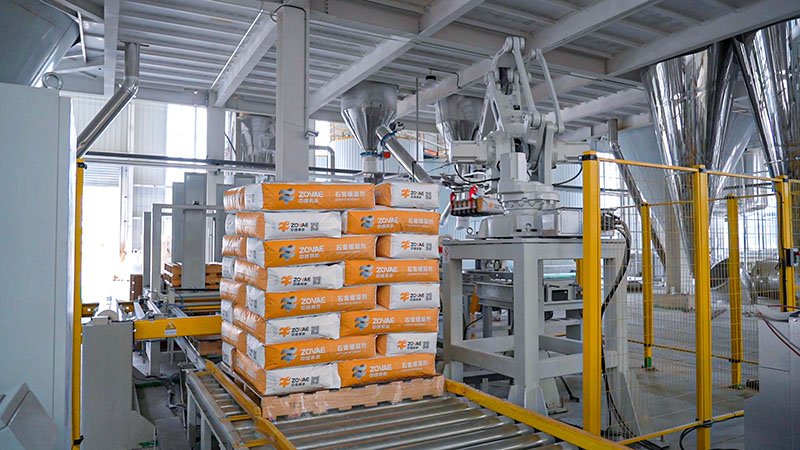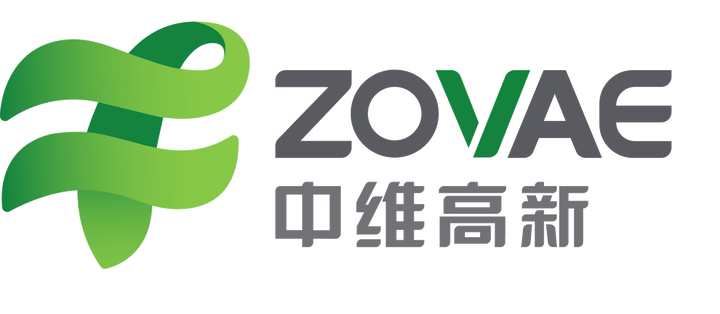Executive Summary
Gypsum, a naturally occurring calcium-sulfate-based binder, stands as a multifunctional, air-hardening material that has been integral to construction for millennia. As one of the foundational trio of cementitious materials alongside lime and Portland cement, it remains indispensable in modern building systems due to its inherent attributes—fire resistance, acoustic insulation, thermal regulation, smooth finishing, and exceptional workability. Its sustainability profile is strengthened by low calcination energy demands and recyclability, aligning with contemporary green building and energy-efficiency mandates. This expansive white paper elucidates the diverse applications of gypsum in construction, detailing its critical roles in mortars, boards, prefabricated products, and as a set retarder in cement systems. It further unpacks the significant benefits of gypsum-based materials and introduces Zovae Gypsum Retarder—a high-performance additive designed to optimize workability, finishing quality, and dimensional stability across varied gypsum applications. Enriched with detailed formulation guidance, quality control protocols, global case studies, sustainability assessments, and actionable implementation roadmaps, this document equips industry stakeholders—contractors, manufacturers, and engineers—with the knowledge to harness gypsum’s full potential in modern interior and architectural endeavors.
Overview: The Timeless Value of Gypsum in Construction
Gypsum has been a cornerstone of the built environment since antiquity, with evidence of its use in plasterwork dating back to the pyramids of Egypt over 4,000 years ago. Today, as a vital member of the cementitious material triad with lime and Portland cement, gypsum continues to dominate interior construction due to its widespread availability and ease of processing. Chemically predominantly calcium sulfate dihydrate (CaSO₄·2H₂O), it is transformed into hemihydrate (CaSO₄·½H₂O) through calcination, functioning as an air-hardening binder with rapid yet adjustable setting properties. Its notable characteristics—fire resistance (Class A per ASTM E84 or Euroclass A1 per EN 13501-1), acoustic damping (STC ratings of 30-50 per ASTM E90), thermal moderation (conductivity ~0.25 W/m·K), aesthetic finishing, and superior trowelability—reinforce its status as a preferred material for modern interiors. Additionally, gypsum products require calcination at significantly lower temperatures (120-180°C) compared to Portland cement (up to 1450°C), reducing energy use and carbon emissions. Their compatibility with recycled streams, such as flue-gas desulfurization (FGD) gypsum, and ease of reclamation for boards and plasters align with sustainable building certifications like LEED and BREEAM. But how does such a traditional material keep pace with the demands of contemporary construction? The answer lies in advanced additives like Zovae Gypsum Retarder, which amplify gypsum’s natural strengths to meet today’s project complexities with precision and reliability.
Applications of Gypsum in the Construction Industry
1) Gypsum as a Cementitious Material in Mortar
- Interior Wall Plastering: Gypsum plasters yield smooth, dense, and crack-resistant surfaces with robust adhesion to substrates such as brick, concrete, and plasterboard. Their rapid, controllable set—often 3-10 minutes for β-hemihydrate as per EN 13279-2—expedites turnaround for painting or finishing, while a fine particle structure ensures excellent trowelability and detailed surface quality, meeting high aesthetic standards.
- Self-Leveling and Dry-Mix Mortars: Gypsum-based self-leveling underlayments provide consistent flow, minimal shrinkage (typically <0.02% per ASTM C157), and high early hardness (often >20 MPa compressive strength in 24 hours per EN 13813), allowing quick foot-traffic access and efficient trade sequencing. In dry-mix systems, gypsum supports uniform rheology and polished finishes, ideal for both manual and mechanized applications in interior environments.
- High-Performance Architectural Finishes: For upscale interiors—such as luxury hotels or cultural spaces—gypsum mortars can be customized for enhanced strength (>30 MPa per ASTM C472), abrasion resistance, and dimensional stability. These formulations produce sharp edges and durable surfaces in prominent areas, suitable for intricate detailing and sustained performance under environmental or mechanical stress.
2) Gypsum Boards and Prefabricated Products
- Paper-Faced and Fiber-Reinforced Boards: Constituting the core of most interior wall and ceiling systems, gypsum boards integrate fire resistance (Class A per ASTM E84), sound insulation (STC ratings of 30-50 per ASTM E90), and a smooth finishing surface. Fiber-enhanced versions increase impact resistance and screw-holding capacity, adhering to standards like EN 520 for Type F (fiber-reinforced) boards, making them ideal for high-traffic commercial applications.
- Decorative Elements: Cornices, tiles, medallions, and molded architectural components leverage gypsum’s superior detail replication, stable setting, and sandability to create precise aesthetic enhancements. Compliant with EN 14209 for preformed plaster products, these items enable ornate designs in both heritage restorations and contemporary installations.
- Panels and Ceiling Boards: Prefabricated gypsum panels offer consistent quality, dimensional precision (tolerances <±1 mm per EN 520), and design adaptability while contributing to thermal regulation (thermal conductivity ~0.25 W/m·K) and acoustic comfort (Rw up to 40 dB). These qualities render them essential for modular construction and office fit-outs requiring swift, dependable installation.
3) Gypsum as a Retarder in Cement and Concrete
- Setting Control in Cement: Interground or blended gypsum—typically 3-5% by mass as per EN 197-1—manages Portland cement hydration, particularly the rapid reaction of tricalcium aluminate (C3A), by promoting controlled ettringite formation. This prevents flash set, extends early workability (slump retention per ASTM C143), and stabilizes finishing windows, crucial for hot-weather concreting scenarios.
- Enhanced Consistency and Durability: Optimal sulfate content refines paste microstructure, curtails early heat evolution (per ASTM C186), and improves finishing behavior, ensuring predictable set and strength gain in concretes and cementitious overlays, meeting ACI 318 durability requirements.
- Additive Synergy: In sophisticated mix designs, gypsum works with chemical admixtures like superplasticizers to fine-tune hydration kinetics, aiding in achieving target slump life (30-60 minutes per EN 12350-2), strength profiles (28-day compressive per ASTM C39), and surface quality, reducing defects such as bugholes or segregation.
Application of Gypsum in Dry-Mix Mortar
1) Gypsum-Based Mortar for Interior Finishing
- Plastering and Masonry Interfaces: Gypsum plasters produce smooth, uniform walls with excellent substrate adhesion and minimal shrinkage cracking (<0.1% linear change per ASTM C157). Their fine matrix enables seamless transitions and reduced sanding needs, achieving paint-ready finishes per EN 13279-1 standards.
- Decorative Mortars: Specialty finishes—veneer plasters, textured coatings, and detailed profiles—capitalize on gypsum’s controlled set and high mold or trowel pattern fidelity. Often enhanced with polymers, these products satisfy stringent aesthetic and durability demands for bespoke interiors.
- Joint Fillers and Putties: Gypsum-rich compounds address joints, fastener recesses, and surface imperfections, creating invisible seams and paint-ready surfaces per EN 13963. Their quick set and smooth featherability expedite drywall and panel finishing within tight project schedules.
2) High-Strength and Water-Resistant Gypsum Applications
- Dry Powder Mortars: Plastering, self-leveling, and decorative mortars can be engineered for superior compressive strength (>25 MPa per ASTM C472), early hardness for rapid access, and enhanced wear resistance in high-demand service environments, such as commercial lobbies or public corridors.
- Water-Resistant Formulations: With suitable additives and polymer modification (e.g., silane-based hydrophobes), gypsum systems gain improved moisture tolerance for humid interiors and semi-protected areas, provided local codes and exposure limits (e.g., EN 13950 for wet areas) are respected. These are not replacements for cement in fully immersed conditions but excel in controlled damp settings.
- Enhanced Adhesion and Flexibility: Incorporating redispersible polymer powders (RDP) and cellulose ethers enhances cohesion, substrate bonding (pull-off strength >0.5 MPa per EN 14496), flexibility to accommodate minor movement, and surface finish quality while stabilizing water retention for consistent application.
Zovae Gypsum Retarder for Optimized Performance
Zovae Gypsum Retarder is a cutting-edge set-control additive meticulously designed for gypsum-based materials. By modulating nucleation and crystal growth during the hemihydrate-to-dihydrate transition, it ensures a stable, predictable setting profile across a wide range of formulations and environmental conditions, significantly improving field outcomes.
What Zovae Gypsum Retarder Does
- Extends Open Time: Prolongs workability for gypsum plasters and bonding compounds, facilitating larger placements with fewer cold joints, essential for expansive interior walls and seamless finishes.
- Improves Workability and Finish: Enhances troweling ease and finish quality in dry-mix mortars and plastering compounds, offering a calmer application window and minimizing surface flaws like tool marks and pinholes.
- Enhances Flexibility and Handling: Supports smooth flow and edge definition in self-leveling mortars and gypsum fillers, ensuring even application under diverse job site conditions.
- Optimizes Setting Time: Balances workability with timely demold and handling for putties, decorative coatings, and precast components, preventing production cycle delays.
- Lowers Total Installed Cost: Reduces rework, material waste, and schedule disruptions in large-scale applications, driving cost efficiency and bolstering project profitability.
Where Zovae Gypsum Retarder Fits
- Gypsum plaster and skim coats for interior finishing applications.
- Bonding agents and fillers/putties for seamless surface preparation.
- Self-leveling gypsum/anhydrite underlayments for flooring systems.
- Decorative elements and precast components for architectural detailing.
- Jointing and finishing compounds for drywall installations.
Why Zovae Gypsum Retarder Matters
- Consistency: Delivers predictable set behavior despite fluctuations in temperature, water conditions, and substrate absorption rates, maintaining adherence to project timelines.
- Quality: Extends finishing windows, resulting in fewer tool marks, pinholes, and surface defects, ensuring superior aesthetic and functional performance.
- Productivity: Curbs waste from premature set and reduces callbacks due to uneven hardening or dusting, streamlining operations and enhancing crew efficiency.
Zovae’s Complementary Gypsum Additives
To comprehensively optimize formulation and field performance, Zovae offers a robust suite of complementary additives:
- Cellulose Ethers: HPMC, MHEC, HEC, and CMC grades improve water retention, workability, and anti-sag control across plasters, putties, and self-levelers, meeting EN 13963 performance benchmarks.
- Redispersible Polymer Powders (RDP) : Enhance adhesion, flexibility, and abrasion resistance with tuned glass transition temperature (Tg) and minimum film-forming temperature (MFFT) options for ambient adaptability, per EN 14496 standards.
- Starch Ethers and Rheology Modifiers: Refine thixotropy, featherability, and edge stability in manual and machine-applied systems, ensuring application precision and consistency.
- Technical Support: Leveraging decades of R&D expertise in cellulose ethers and gypsum additives, Zovae provides tailored grade selection, laboratory screening, pilot trials, and on-site implementation assistance, underpinned by a growing global presence in regions like Central Asia and South America.
Practical Notes for Specifiers and Producers
Formulation Guidance (Starting Points)
- Choose Gypsum Type Intentionally: β-hemihydrate typically requires a higher water content (water-to-gypsum ratio of 0.6-0.8) and benefits from polymer modification for improved workability, while α-hemihydrate supports greater compressive strengths (>30 MPa per ASTM C472) and sharper edges, ideal for precast and decorative applications.
- Balance the Additive Package: Combine Zovae Gypsum Retarder (0.02-0.20% by gypsum mass) with cellulose ethers (e.g., 0.1-0.3% HPMC for water retention) and RDP (1-3% for bond/ductility); ensure compatibility with defoamers (0.05-0.1%) to reduce pinholes in high-finish work.
- Validate Set Curves: Determine initial and final set versus retarder dosage at two representative water/mix temperatures (e.g., 15°C and 30°C) to establish a predictable finishing window, using Vicat or Gillmore methods per ASTM C472 or EN 13279-2 standards.
- Control Water Temperature: Minor temperature variations (3-5°C) can significantly alter set times; standardize within each shift (e.g., 20±2°C) to minimize dosage adjustments and maintain result stability.
- Tune for Application: For self-leveling mortars, pair the retarder (0.02-0.08%) with superplasticizers (0.1-0.5% PCE) and viscosity-modifying agents (VMAs, 0.05-0.1%) to prevent segregation at high flow (slump flow >600 mm per EN 12706); for hand-applied plasters, prioritize creamy texture with increased cellulose ether doses (0.2-0.4%).
Quality Control Checkpoints
- Fresh State:
- Consistency/spread at fixed water content (flow table test per EN 1015-3).
- Practical workability window (crew-observed duration to loss of finishability).
- Visual stability (absence of segregation or bleeding).
- Air content for high-finish mixes (target <2% per ASTM C185 to avoid pinholes).
- Hardened State:
- Early handling strength or demold time (2-24 hours, based on project requirements).
- 7-day hardness/compressive strength (>20 MPa for plasters per ASTM C472).
- Surface quality (visual rating for smoothness, tool marks, pinholes).
- Adhesion where paint or overlays are planned (>0.5 MPa pull-off per EN 14496).
- Dimensional checks for precast accuracy (flatness/straightness tolerance <±1 mm per EN 520).
Common Field Benefits You Can Expect
- Smoother finishes with diminished sanding and patching needs, reducing labor costs and dust-related health concerns on-site.
- Larger continuous application areas per mix without cold joints, enhancing both structural integrity and aesthetic uniformity.
- More consistent hardness across rooms and over successive days, ensuring reliable performance and visual continuity.
- Reduced scrap rates and minimized rework on decorative components, bolstering project economics and timelines.
Summary of Advantages of Gypsum in Today’s Building Materials
- Sustainability: Operates at lower calcination temperatures (120-180°C) compared to cement (up to 1450°C), cutting embodied carbon; integrates with recycled/FGD gypsum streams; supports easy reclamation pathways for boards and plasters per ISO 14040 lifecycle assessments.
- Safety and Comfort: Offers intrinsic fire resistance (Class A per ASTM E84 or Euroclass A1 per EN 13501-1), acoustic performance (STC 30-50 per ASTM E90), and stable indoor climate control (thermal conductivity ~0.25 W/m·K).
- Constructability: Demonstrates superior workability, a quick yet adjustable set (3-30 minutes per EN 13279-2), and forgiving finishing characteristics, enabling high-quality interiors with reduced skill dependency.



